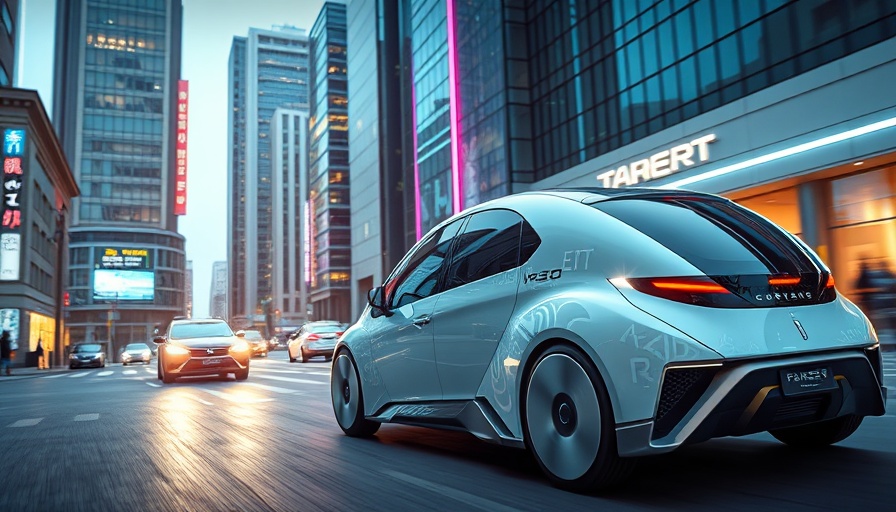
Understanding Tesla's Revolutionary Robotaxis
Tesla has entered a new era with the introduction of its robotaxis, a significant step in the evolution of transportation that could redefine urban mobility. But what exactly are robotaxis, and how do they work? Unlike traditional ride-sharing services, Tesla's robotaxis rely on autonomous technology, enabling these vehicles to operate without a human driver. As cities grapple with the challenges of congestion and pollution, robotaxis present a potential solution for more efficient urban transport.
The Technology Behind the Autonomous Vehicle
The heart of Tesla's autonomous capabilities lies in its advanced AI technology and continuous software updates. Tesla’s vehicles are equipped with a suite of sensors and cameras that provide a 360-degree view of their surroundings. This technological backbone is what allows the robotaxis to navigate complex urban environments seamlessly. The ongoing enhancement of neural networks means that, as they gather more data from real-world driving scenarios, robotaxis will only get smarter and safer over time.
Benefits of Adopting Robotaxis
One of the most compelling aspects of robotaxis is their potential to reduce transportation costs. With no driver salaries to pay, ride fares could drop significantly, making transportation more affordable for everyone. Moreover, robotaxis could lead to a reduction in vehicle ownership, thereby alleviating congestion and parking shortages in urban areas. Less reliance on personal vehicles also means fewer cars on the road, contributing to decreased emissions and improved air quality.
Pushing Towards Regulation and Infrastructure Change
While the benefits are significant, the rollout of robotaxis comes with its own set of challenges, primarily concerning regulation and public acceptance. For cities to embrace this technology, robust regulatory frameworks will need to be developed to ensure safety and address concerns regarding liability in the event of accidents. Local governments will also need to invest in the infrastructure that supports autonomous vehicles, such as dedicated lanes and charging stations, to facilitate their integration into the existing transport ecosystem.
Public Perception: Fears and Acceptance
The road to acceptance for robotaxis isn’t without hurdles. Many people are apprehensive about the safety of autonomous vehicles, primarily due to the dramatic coverage of accidents involving self-driving cars. However, studies indicate that autonomous vehicles could potentially reduce traffic accidents significantly, as they are programmed to obey traffic laws and make calculated decisions in real-time. Raising awareness and educating the public about the safety measures in place will be crucial in easing these concerns.
The Future of Transportation: What Lies Ahead
Looking forward, the future of robotaxis is bright yet uncertain. While Tesla has laid the groundwork with its innovative technology, broader adoption depends on regulatory landscapes and public acceptance. Another important factor will be the competition; as other tech and automotive companies enter the robotaxi space, they will impact Tesla's market strategy and innovation cycles. With cities becoming more congested and the urgency of climate change increasing, the introduction of robotaxis could revolutionize the way we think about transportation.
Conclusion: The Takeaway for Individuals and Communities
As Tesla rolls out its robotaxis, individuals and communities must stay informed about this transformative technology. Understanding the potential impacts on daily life, urban planning, and environmental considerations can help us navigate the changes ahead. Embracing this technology might not just offer convenience; it could also pave the way for a more sustainable future. The choices we make today in embracing or resisting such innovations will shape our travel landscapes for generations to come.
 Add Row
Add Row  Add
Add 



Write A Comment